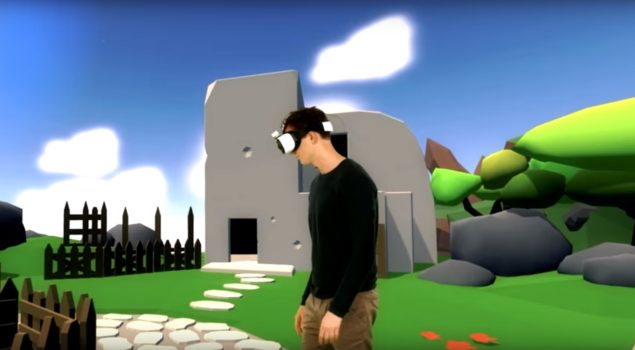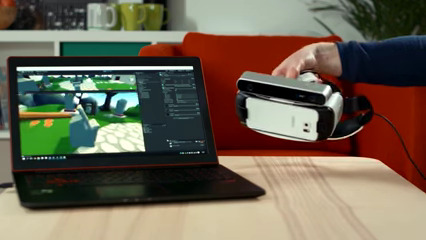
Part of the reason the HTC Vive gets such great reviews — and costs so much — is that it does positional tracking. When you walk around wearing the headset, you walk around inside the virtual environment as well.
Mobile-based headsets, on the other hand, require you to move using a joystick or some kind of in-game mechanism that doesn’t involve actual physical walking. And when your virtual reality experience makes you think you’re moving, but you’re actually sitting still, that’s when motion sickness kicks in.
To help address the problems, Stereolabs has released a $450 depth-sensing camera, ZED, that adds positional tracking to Gear VR or Google Cardboard headsets.
Unfortunately, it isn’t capable of tracking hand gestures. The system also requires a separate computer to run it, connected using a 150-foot cable, or a separate portable computer module.
“This option is more expensive for users as they have to buy an additional module for about $500 but users can freely move without any limit in terms of distance,” a ZED spokesperson told Hypergrid Business. “It’s a first step towards the final objective — to integrate the module into the headset or phone. We believe this will be possible in one or two years.”

Currently, phones aren’t powerful enough to run the camera on top of running the virtual reality applications.
“There are some constraints in terms of use because you still need a cable but it’s a big first step towards position tracking for mobile virtual reality,” said the company representative. “The next step will be integration into headsets but as GPU power is increasing fast and power consumption is reducing fast as well, we strongly believe it will be possible to have this next year.”
The camera can also be used on drones and to record 110-degree virtual reality video. There’s also a software development kit so that other companies can build their own applications using the camera.
Watch a demo video below:
- OpenSim active users hit all-time-high for the holidays - December 15, 2023
- OpenSim user activity ramping up for the holidays - November 15, 2023
- OpenSim land area at a new high as grids prep for holidays - October 15, 2023
